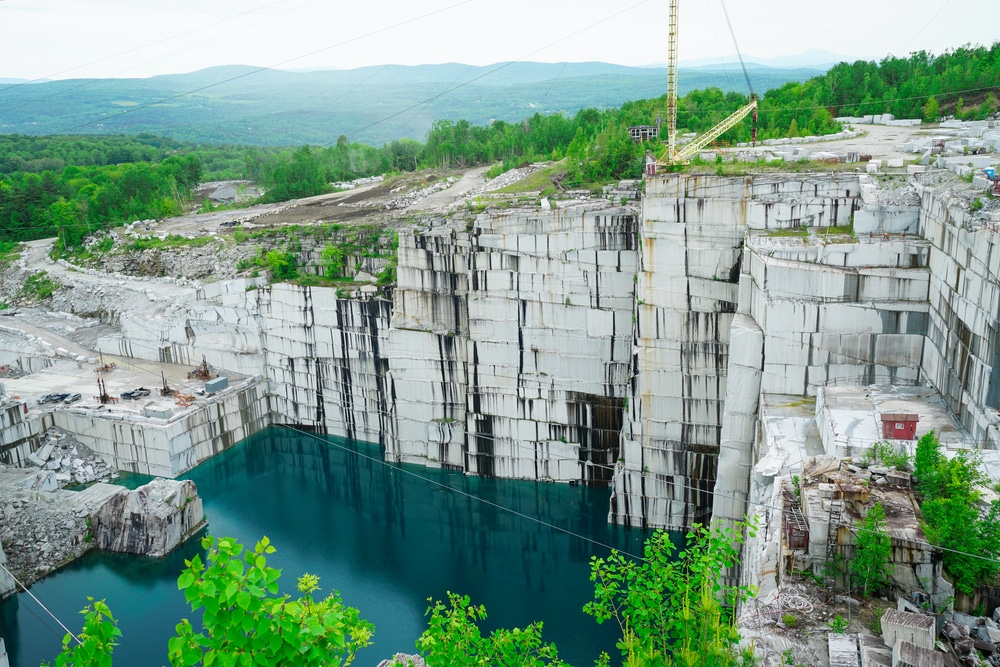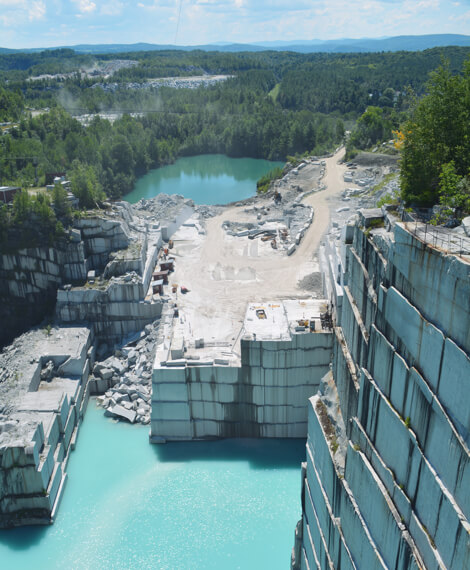Journey Into Rustenburg's Geological Marvels: Granite Quarries in Rustenburg
Wiki Article
From Quarry to Kitchen Counter: Recognizing the Refine of Granite Removal
Granite, a prominent selection for countertops because of its sturdiness and visual charm, undergoes an interesting journey from the depths of a quarry to its final destination in our bathroom and kitchens. As we look into the elaborate process of granite removal, we will certainly discover the secrets behind the development of these majestic stone deposits, discover the methods and equipment utilized in quarrying, and unravel the actions included in changing raw granite blocks right into brightened and finished kitchen counters. From the geological beginnings to the precise craftsmanship, this trip guarantees to expose the exceptional tale behind the development of these practical and classic pieces.Formation of Granite Deposits
The development of granite down payments is a geologic process that involves the gradual air conditioning and solidification of magma deep within the Earth's crust. Granite, an usual kind of igneous rock, is formed when molten magma cools off and solidifies over extended periods of time. This process takes place underneath the Earth's surface area, commonly at midsts of a number of kilometers.Granite is mainly composed of three major minerals: feldspar, mica, and quartz. These minerals combine to offer granite its characteristic appearance and look. As the magma cools, the minerals interlock and crystallize, creating a securely packed structure. The sluggish air conditioning procedure permits the development of big crystals, which provide granite its unique grainy texture.
The development of granite down payments is commonly related to structural task, such as the crash of continental plates or the climb of magma from the mantle. The intense heat and pressure produced throughout these procedures add to the melting of rocks and the subsequent development of lava.
Over countless years, the strengthened granite is exposed at the surface with erosion and uplift. This is when granite deposits can be quarried and drawn out for numerous applications, including kitchen counters, floor covering, and building and construction products.

Quarrying Techniques and Equipment
Quarrying strategies and devices play a crucial duty in the effective removal of granite deposits for different industrial applications. The process involves using specialized devices and equipment that guarantee the smooth and secure removal of granite blocks from the quarry site.Among the primary strategies used in granite quarrying is piercing (granite quarries in rustenburg). This entails making use of drilling equipments geared up with diamond-tipped drill little bits. These equipments create holes in the rock surface, permitting the insertion of eruptive charges. Once the costs are detonated, the resulting surge breaks the granite into manageable blocks.
In enhancement to boring, cutting and splitting devices are also essential in granite quarrying. Wire saws and high-pressure water jets are frequently utilized to puncture the granite. These methods are reliable in separating the granite into private blocks, which can then be additional processed.
Packing and hauling equipment are crucial in the transportation of granite blocks from the quarry to the handling center. Durable vehicles and forklifts are typically made use of to relocate the blocks, guaranteeing their safe and efficient transfer.

Extraction and Transportation of Granite Blocks
With the completion of the quarrying strategies and equipment section, we currently turn our focus to the critical procedure of delivering and extracting granite blocks. Once the granite has actually been effectively quarried, it is needed to remove the blocks from the quarry face. This is generally done using heavy equipment, such as excavators or front-end loaders, which are geared up with huge blades or rippers to damage the blocks devoid of the bordering rock.After the blocks have actually been removed, they need to be carried to the processing center. This is normally done utilizing specialized vehicles or trailers that can lugging the tremendous weight of the granite obstructs. These transport cars are developed to make certain the efficient and risk-free activity of the blocks, with attributes such as enhanced structures, hydraulic systems, and secure tie-downs.
The transport process requires mindful preparation and sychronisation to guarantee the blocks reach their destination without damage. This entails selecting the suitable paths, considering variables such as roadway conditions, weight restrictions, and the dimension of the blocks. It is also important to safeguard the blocks properly during transport to stop sliding or changing, which can result in crashes or damages to the blocks.
Cutting and Shaping Granite Pieces
To develop exact and sleek granite slabs, a meticulous procedure of reducing and forming is utilized. When the granite blocks have been extracted from the quarry and carried to the center, they are all set to undertake this essential step.The sides of the pieces are smoothed and rounded, giving them a finished and refined appearance. The surface area of the pieces is additionally brightened to accomplish a shiny and reflective coating.

Sprucing Up and Ending Up the Granite Countertops
The last action in the granite removal process includes the precise sprucing up and finishing of the granite countertops. After the granite pieces have actually been cut and formed to the preferred dimensions, they go through a series of therapies to enhance their appearance and resilience.The initial phase of the brightening process is called grinding. During this stage, rugged diamond abrasives are utilized to remove any type of imperfections and smooth the surface area of the granite. granite quarries in rustenburg. This procedure is crucial for achieving an uniform and level coating
As soon as the grinding is total, better ruby abrasives are employed to additional improve the surface area of the granite. This draws out the natural beauty of the rock and offers it a reflective and glossy look.
After the polishing stage, the granite kitchen counters are extensively cleaned up to eliminate any dirt or particles. This is complied with by the application of a sealer, which helps safeguard the rock from spots and scrapes.
Verdict
In final thought, the procedure of granite removal includes numerous phases, consisting of quarrying, extraction, transport, cutting, forming, polishing, and completing. Granite down payments are formed over millions of years with geological processes.As we dive into the detailed process of granite extraction, we will certainly discover the secrets behind the formation of these stunning stone deposits, explore the strategies and equipment utilized in quarrying, and untangle the actions involved in changing raw granite obstructs into polished and finished kitchen counters (granite quarries in rustenburg). These methods are efficient in separating the granite right into individual get more blocks, which can then be more processed
With the conclusion of the quarrying methods and equipment area, we currently transform our focus to the critical process of moving and removing granite blocks.To produce specific and polished granite slabs, a meticulous procedure of cutting and forming is used.In conclusion, the process of granite extraction entails numerous phases, consisting of quarrying, removal, transportation, cutting, his explanation shaping, polishing, and ending up.
Report this wiki page